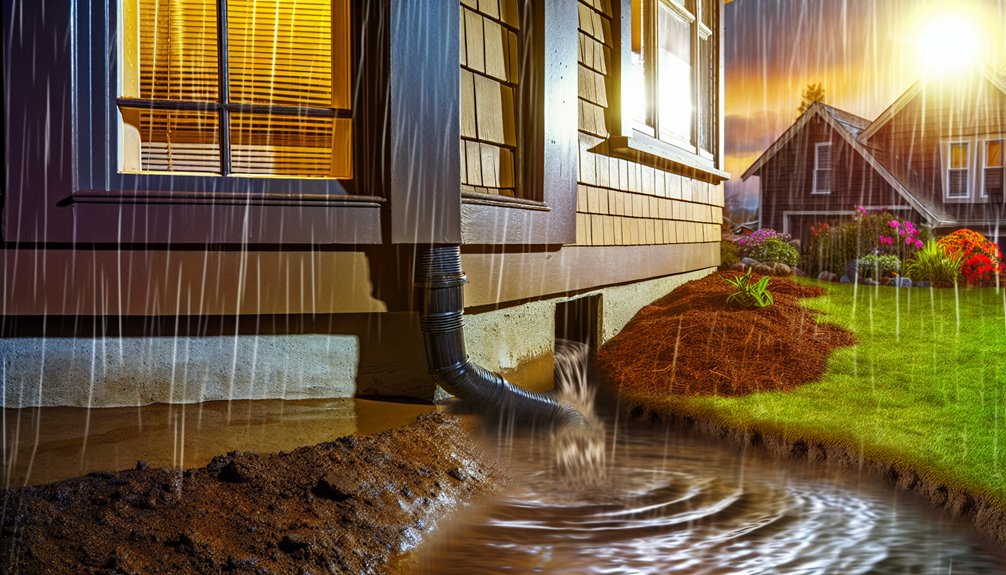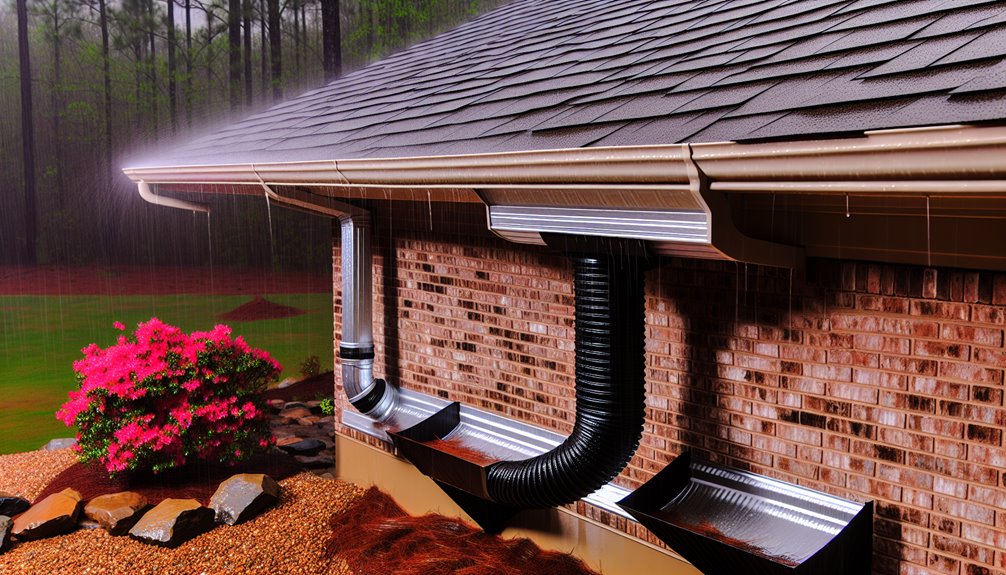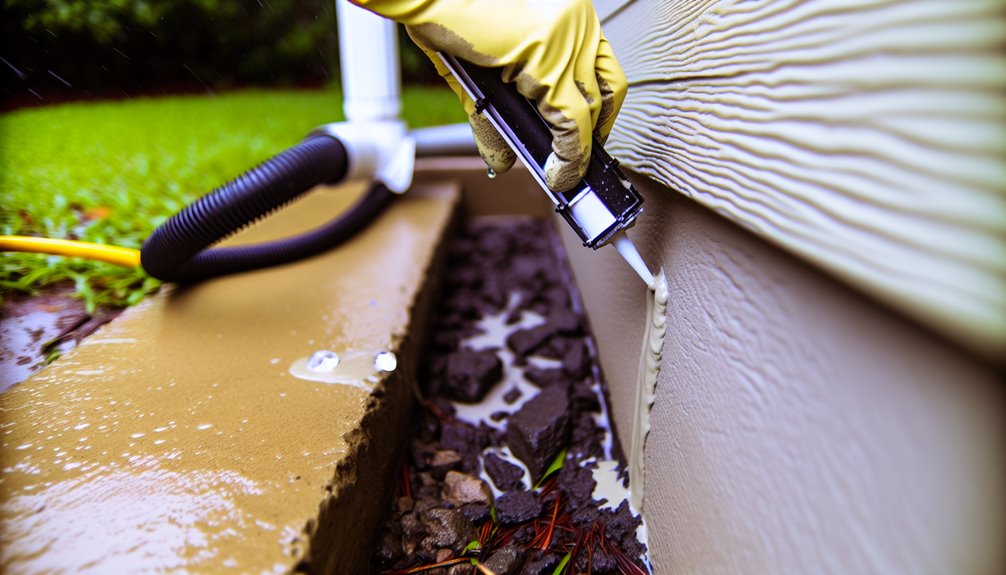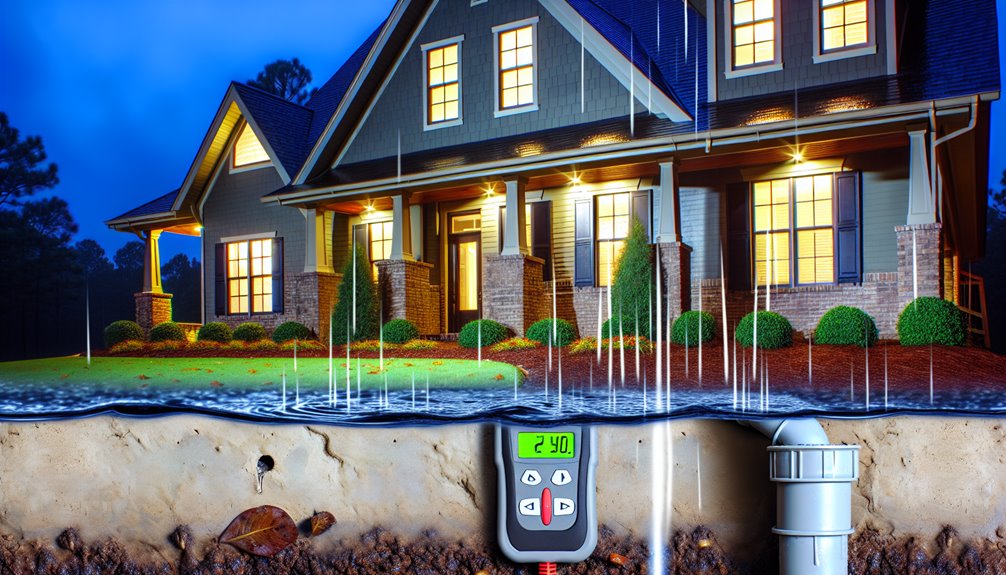Most water intrusion in Hattiesburg starts at ground level, not the roof, because subtle grading errors push rain toward your foundation. You can stay ahead by mapping low spots after a storm, confirming positive drainage, and extending downspouts well beyond slab or piers. Check flashing and plumbing boots, test your sump with battery backup, and stage sandbags. A few targeted fixes now can prevent costly structural damage—and the next steps are simpler than you think.
Know Your Home’s Vulnerable Zones

Before heavy storms roll in, audit your property to pinpoint where water can intrude or accumulate. Walk the perimeter, confirm positive grading, and clear drains. Inspect door thresholds, window wells, and siding penetrations for gaps. Check crawlspaces for standing water and verify sump pump function. Evaluate attic ventilation to prevent condensation that mimics leaks and triggers mold. Map electrical vulnerability: label panel circuits, elevate cords, and keep GFCIs tested in damp zones. Probe foundation cracks, seal pipe chases, and insulate cold water lines to reduce sweating. Document findings, prioritize quick fixes, and stage tarps, sandbags, and tools for rapid, safe deployment.
Roof Readiness: Shingles, Flashing, and Vents
With ground-level vulnerabilities mapped, shift upward to the first line of weather defense: your roof. Inspect shingles for lifted edges, cracks, and granule loss; replace damaged tabs and seal exposed fasteners. Verify step and counter flashing at chimneys, skylights, and sidewalls; re-seat with corrosion-resistant nails and high-grade sealant. Confirm underlayment integrity and install ice barriers along eaves and valleys to stop wind-driven rain intrusion. Clear and screen ridge vents; make certain baffles aren’t blocked and fasteners are watertight. Check plumbing boots and box vents for UV cracking; swap deteriorated gaskets. Document findings, prioritize repairs, and schedule professional evaluation before storms.
Gutters and Downspouts That Actually Drain

Start by clearing out debris so gutters and downspouts can move water fast and safely away from your foundation. Inspect hangers, seams, and outlets; tighten, reseal, and test with a hose. Prioritize seamless gutters to reduce leaks, and fit leaf guards to cut maintenance and overflow risk. Extend downspouts at least 6–10 feet, using rigid piping where traffic or mowers pass. Protect volunteers and family—use stabilized ladders, gloves, and eye protection.
- Verify slope: 1/16–1/8 inch per foot toward downspouts.
- Add splash blocks or buried extensions to prevent backflow.
- After big storms, recheck for sagging, clogs, and loose fasteners.
Smart Grading and Soil Management Around the Foundation
Gutters that discharge properly only work if the ground carries water away too. Set a 5–10% slope for the first 10 feet from your foundation—about 6–12 inches of fall. Add soil with proper compaction in thin lifts to prevent settling. Keep the topsoil crown at least 6 inches below siding. Use clayey fill closest to the wall, then topsoil for vegetation. Install mulch barriers to slow splash, but keep mulch 6–12 inches off the foundation. Direct downspouts onto splash blocks or drains, not bare soil. Regrade low spots after heavy storms. Mark utilities before digging. Wear PPE and stabilize slopes promptly.
Sealing Foundation Cracks and Penetrations

Target foundation cracks and penetrations early to block water paths before Hattiesburg’s heavy rains exploit them. Inspect slab edges, stem walls, and utility entries; map defects, measure width, and check moisture. For structural cracks, use epoxy injection to bond concrete and restore load transfer. For active leaks or moving joints, choose polyurethane sealing; it expands to fill voids and stop water.
- Clean to bare concrete, dry the area, and drill/port per manufacturer specs.
- Inject from bottom to top, watching for material return and pressure stability.
- Seal penetrations around pipes with non-shrink hydraulic cement, then wrap with urethane caulk for redundancy.
Weatherproofing Doors, Windows, and Siding
Although storms roll in fast across Hattiesburg, you can harden doors, windows, and siding against wind‑driven rain with disciplined detailing and timely maintenance. Install storm thresholds and continuous door sweeps; adjust hinges and strike plates to guarantee even compression on weatherstripping. Recaulk window perimeters with high‑quality, paintable elastomeric sealant; backer rod fills wide gaps. Add frame insulation at rough openings to reduce condensation and water tracking. Verify flashing: head flashing with end dams, sill pans with positive drainage, and shingle‑style overlaps on housewrap. Replace cracked glazing putty. Secure siding fasteners, maintain clearance above grade, and seal penetrations. Document work for accountability.
Crawlspaces, Basements, and Sump Pump Essentials

In Hattiesburg’s long, soaking fronts, treat the crawlspace or basement like a water-control system, not storage. Seal foundation cracks, install a continuous vapor barrier, and keep vents screened. Prioritize sump maintenance: test monthly, clear the pit, and replace failing check valves. Add a battery backup so pumps run during outages. Dehumidify to 50% RH for mold prevention and wood longevity. Elevate utilities and label shutoffs for safe access.
- Inspect joists, piers, and insulation quarterly; document moisture readings.
- Clean gutters and discharge lines; keep outlets 10 feet from the foundation.
- Train household members on pump alarms, breaker resets, and emergency procedures.
Yard Drainage Solutions: French Drains, Swales, and Dry Wells
Redirect roof and surface runoff before it reaches your foundation by pairing graded swales, perforated French drains, and properly sized dry wells. Survey slopes; create 2–5% fall away from structures. Excavate swales with stable side slopes, line with geotextile, and use turf or riprap to prevent erosion. Install French drains below sod level with washed gravel and filter fabric; daylight or tie into dry wells sized to local storm intensity. Add gutter extensions and permeable pavers to disperse flow. Direct overflow to rain gardens for infiltration, not toward neighbors. Call 811 before digging, verify utility clearances, and secure permits as required.
Moisture Monitoring and Early Warning Signs

Once you’ve routed runoff away from the house, verify it’s working by monitoring moisture where failures start: foundations, crawlspaces, basements, and attic roof decks. Install humidity sensors at grade-level corners, near sump pits, and along rim joists. Log readings weekly; investigate spikes immediately. Use condensation mapping with an infrared camera to spot cold bridges and hidden wet spots before mold colonizes. Probe wood with a moisture meter; anything above 16% needs drying and source control. Prioritize safety: wear PPE, isolate circuits near damp areas, and ventilate.
- Musty odors or efflorescence
- Peeling paint or cupped flooring
- Rusted fasteners or stained sheathing
Seasonal Maintenance Checklist for the Gulf South Climate
Start each rainy season with a targeted inspection sequence tailored to Gulf South heat, humidity, and storm surges. Verify roof fasteners, flashing, and sealed penetrations; replace cracked boots. Clear gutters, extend downspouts 6–10 feet, and regrade soil for positive drainage. Test sump pumps and check valve operation. Service HVAC for humidity control; keep indoor RH 40–55%. Inspect caulk at windows, doors, and siding junctions; reseal gaps. Flush French drains; clean swales. Anchor outdoor tanks and secure loose fencing. Install door sweeps and screens for pest prevention. Stock sandbags, tarps, and PPE. Document maintenance, label shutoffs, and brief household helpers.
Conclusion
As the owner of Hydra Clean right here in Hattiesburg, I want you to feel confident about protecting your home during the rainy season. If you have any questions or need assistance in preparing your home, I’m here to help! Feel free to visit myhydraclean.com or give me a call at (601) 336-2411. Let’s work together to ensure your home stays safe and dry, making those storms just another part of life rather than a cause for concern. I look forward to hearing from you!

